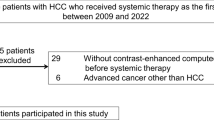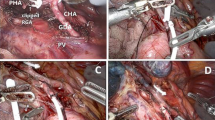Abstract
Background: Recent clinical and experimental studies investigated the problem and possible pathomechanisms of port-site metastases after laparoscopic resection of malignant tumours. A generally accepted approach to prevent these tumour implantations does not exist so far. Methods: After subcutaneous and intraperitoneal injection of 104 cells of colon adenocarcinoma (DHD/K12/TRb) the influences of either taurolidine or taurolidine/heparin on intraperitoneal and subcutaneous tumour growth were investigated in 105 rats undergoing laparoscopy with carbon dioxide. The animals were then randomised into seven groups. A pneumoperitoneum was established using carbon dioxide for 30 min (8 mmHg). Three incisions were used: median for the insufflation needle, and a right and left approach in the lower abdomen for trocars. To investigate the intraperitoneal (local) influence of either taurolidine and heparin on tumour growth the substances were instilled intraperitoneally. Systemic effects were expected when the substances were applied intravenously (iv). Synergistic influences were tested when both application forms were combined. The number and the weight of tumours as well as the incidence of abdominal wall and port-site metastases were determined four weeks after intervention. Blood was taken to evaluate the influences of taurolidine and heparin on systemic immunologic reactions: seven days before laparoscopy, two hours, two days, seven days, and four weeks after operation, and the peripheral lymphocytes were determined. Results: Intraperitoneal (ip) tumour weight in rats receiving taurolidine (median 7 mg) and taurolidine/heparin (0 mg) intraperitoneally was significantly reduced when compared to the control group (52 mg) (P=0.001). There was no difference of subcutaneus tumour growth among the groups (P=0.4). Trocar recurrences were decreased when taurolidine was applied ip (3/15), ipiv (4/15), and ip in combination with heparin (4/15) in comparison to the control group (10/15). Immediately after intervention treated and untreated groups showed a peripheral lymphopenia. Conclusions: The intraperitoneal therapy with taurolidine and the combination with heparin inhibits the intraperitoneal tumour growth and trocar recurrences. Neither the intraperitoneal nor the systemic application or the combination of taurolidine and heparin did reduce the subcutaneous tumour growth. The intervention caused a lymphopenia which was compensated on day two.
Similar content being viewed by others
References
Bruch HP, Herold A, Schiedeck THK et al. Laparoskopische Chirurgie des Rektumkarzinoms. Zentralbl Chir 1997; 122: 1134–41.
Jacobi CA, Wildbrett P, Volk T et al. Influence of different gases and intraperitoneal instillation of antiadherent or cytotoxic agents on peritoneal tumour cell growth and implantation with laparoscopic surgery in a rat model. Surg Endosc 1999; 13: 1021–5.
Jacobi CA, Ordemann J, De Cuyper KI et al. Laparoskopische Chirurgie maligner Tumoren. Experimentelle Ergebnisse zur Pathogengese und Prävention von Trokarmetastasen. Viszeralchirurgie 1999; 34: 182–9.
Jacobi CA, Sabat R, Böhm B et al. Pneumoperitoneum with carbon dioxide stimulates growth of malignant colonic cells. Surgery 1997; 121: 72–8.
Jacobi CA, Sabat R, Ordemann J et al. Peritoneal instillation of taurolidine and heparin for preventing intraperitoneal tumor growth and trocar metastases in laparoscopic operations in the rat model. Langenbecks Arch Chir 1997; 382: 31–6.
Jacobi CA, Peter FJ, Wenger FA et al. New therapeutic strategies to avoid intra-and extraperitoneal metastases during laparoscopy: results of a tumour model in the rat. Dig Surg 1999; 16(5) 393–5.
Ishida H, Murata N, Yamada H et al. Pneumoperitoneum with carbon dioxide enhances liver metastases of cancer cells implanted into the portal vein in rabbits. Surg Endosc 2000; 14: 239–42.
Targarona EM, Martinez J, Nadal A et al. Cancer dissemination during laparoscopic surgery: Tubes, gas, and cells. World J Surg 1998; 22: 55–61.
Wu JS, Brasfield Earl B, Guo LW et al. Implantation of colon cancer at trocar sites is increased by low pressure pneumoperitoneum. Surgery 1997; 122(1): 1–7.
Neuhaus SJ, Watson DI, Ellis T et al. Efficacy of cytotoxic agents for the prevention of laparoscopic port-site metastases. Arch Surg 1998; 133: 762–6.
Neuhaus SJ, Watson DI, Ellis T et al. Influence of cytotoxic agents on intraperitoneal tumour implantation after laparoscopy. Dis Colon Rectum 1999; 42 (1): 10–5.
Iwanaka T, Arya G, Ziegler MM. Mechanism and prevention of portsite tumour recurrence after laparoscopy in a murine model. J Pediatr Surg 1998; 33(3): 457–61.
Bedrosian I, Sofia RD, Wolff SM et al. Taurolidine. An analogue of the amino acid taurine, suppresses interleucin-1 and tumour necrosis factor synthesis in human peripheral blood mononuclear cells. Cytokine 1991; 3: 568–75.
Neuhaus SJ, Ellis T, Jamieson GG et al. Experimental study of the effect of intraperitoneal heparin on tumour implantation following laparoscopy. Br J Surg 1999; 86 (3): 400–4.
Yanagisawa M, Imai H, Fukushima Y. Effects on tumour necrosis factor alpha and interleukin 1 beta on the proliferation of cultured glomerular epithelial cells. Virchows Arch 1994; 426: 581–6.
Goldstein DS, Lu ML, Hattori T. Inhibition of peritoneal tumour cell implantation: model for laparoscopic cancer surgery. J Endourol 1993; 7: 237–41.
Knight BI, Skellern GG, Browne MK et al. Peritoneal absorption of the antibacterial and antiendotoxin Taurolidine in peritonitis. Br J Clin Pharmac 1981; 12: 695–9.
Wang PH, Yen MS, Yuan CC et al. Port-site metastasis after laparoscopic-assisted vaginal hysterectomy for endometrial cancer: possible mechanisms and prevention. Gynecol Oncol 1997; 66: 151–5.
Neuhaus SJ, Watson DI, Ellis T et al. Wound metastasis after laparoscopy with differrent insufflation gases. Surgery 1998; 123: 579–83.
Bouvy ND, Marquet RL, Jeekel J et al. Laparoscopic surgery is assosiated with less tumour growth stimulation than conventional surgery: an experimental study. Br J Surg 1997; 84(3): 358–61.
Hewett PJ, ThomasWM, King G, et al. Intraperitoneal cell movement during abdominal carbon dioxide insufflation and laparoscopy: an in vivo model. Dis Colon Rectum 1996; 39: 62–6.
Wexner SD, Latulippe JF. Laparoscopic colorectal surgery and cancer. Swiss Surg 1997; 3: 266–73.
Gorman SP, McCafferty DF, Woolfson AD et al. Reduced adherence of micro-organisms to human mucosal epithelial cells following treatment with Taurolin, a novel antimicrobial agent. J Appl Bacteriol 1987; 62: 315–20.
Lanfrancone L, Boraschi D, Ghiara P. Human peritoneal mesothelial cells produce many cytokines (granulocyte colony-stimulating factor, granulocyte-monocyte CSF, macrophage CSF, IL-1 and IL-2) and are activated and stimulated to grow by IL-1. Blood 1992; 80: 2835–42.
Jacobi CA, Ordemann J, Bohm B et al. Inhibition of peritoneal tumor cell growth and implantation in laparoscopic surgery in a rat model. Am J Surg 1997; 174: 359–63.
Blenkharn JJ. Sustained anti-adherence activity of taurolidine (Taurolin) and noxythiolin (Noxyflex S). J Pharm Pharmacol 1988; 40: 509–11.
McCourt M, Wang JH, Sookhai S et al. Taurolidine inhibits tumor cell growth in vitro and in vivo. Ann Surg Oncol 2000; 7(9): 685–91.
Gutt CN, Kim ZG, Gessmann T et al. Hepatic tumour spread of colorectal cancer in a laparoscopic animal model. Surg Endosc 2000; 14(5): 448–51.
Little D, Regan M, Keane RM et al. Perioperative immune modulation. Surgery 1993; 114: 87–91.
Reymond MA, Wittekind C, Jung A et al. The incidence of port-site metastases might be reduced. Surg Endosc 1997; 11: 902–6.
Staubach KH. Adjuvante Peritonitistherapie mit Taurolidin Modulation der Mediatorfreisetzung. Langenbecks Arch Chir 1997; 382: 26–30.
Paik PS, Misawa T, Chiang M et al. Abdominal incision tumour implantation following pneumoperitoneum laparoscopic procedure vs. standard open midline incision in a syngeneic rat model. Dis Colon Rectum 1998; 419-22.
Jacobi CA, Keller H, Mönig S et al. Implantation metastasis of unsuspected gallbladder carcinoma after laparoscopy. Surg Endosc 1995; 9: 351–2.
Lee SW, Whelan RL, Southall JC et al. Abdominal wound tumour recurrence after open and laparoscopic-assisted splenectomy in a murine model. Dis Colon Rectum 1998; 41: 824–31.
Clair DG, Lautz DB, Brooks DC. Rapid development of umbilical metastases after laparoscopic cholecystectomy for unsuspected gallbladder carcinoma. Surgery 1993; 113: 355–8.
Le Moine MC, Navarro F, Burgel JS et al. Experimental assessment of the risk of tumour recurrence after laparoscopic surgery. Surgery 1998; 123: 427–31.
Neuhaus SJ, Texler M, Hewett PJ et al. Port-site metastasis following laparoscopic surgery. Br J Surg 1998; 85: 735–41.
Author information
Authors and Affiliations
Rights and permissions
About this article
Cite this article
Braumann, C., Ordemann, J., Wildbrett, P. et al. Influence of intraperitoneal and systemic application of taurolidine and taurolidine/heparin during laparoscopy on intraperitoneal and subcutaneous tumour growth in rats. Clin Exp Metastasis 18, 547–552 (2000). https://doi.org/10.1023/A:1011988923523
Issue Date:
DOI: https://doi.org/10.1023/A:1011988923523




